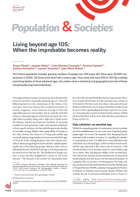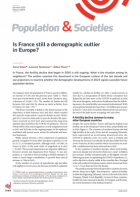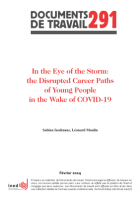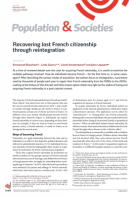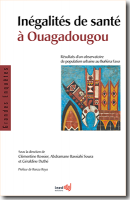
Inégalités de santé à Ouagadougou
Résultats d'un observatoire de population urbaine au Burkina Faso
Collection : Grandes Enquêtes
2019, 276 pagesPreface, Banza Baya
General introduction, Clémentine Rossier
Part 1. Ouagadougou neighborhoods, study and context
Chapter 1. The Observatoire de Population de Ouagadougou (OPO): generalities, dynamic, and socio-demographic profile
Abdramane Bassiahi Soura, Clémentine Rossier
Chapter 2. Poverty and health in the neighborhoods followed by OPO: a qualitative approach
Clémentine Rossier, Marie-Claire Peytrignet
Chapter 3. Environmental conditions in the tracked neighborhoods
Stéphanie Dos Santos
Part 2. Health indicators, analysis, findings
Chapter 4. Child mortality and health: the role of the environment
Abdramane Bassiahi Soura, Stéphanie Dos Santos
Chapter 5. Reproductive health in urban Africa: in what areas is progress still needed?
Clémentine Rossier
Chapter 6. Adult health and the prevalence of non-infectious diseases, Géraldine Duthé
Chapter 7. Health and wellbeing of older people: qualitative assessment and the functional limitations approach
Yentéma Onadja, Sarah Randall, Vincent Léger
General conclusion, Géraldine Duthé, Clémentine Rossier, Abdramane Bassiahi Soura
Afterword, Valéry Ridde
Life expectancy at birth in Burkina Faso currently stands at 58 years, making the country—and its capital city, Ouagadougou—emblematic of sub-Saharan Africa, where mortality continues high.
That high mortality rate is explained by heavy tolls of infectious and parasitic diseases, malnutrition, and maternal deaths. But non-infectious disease levels are rising in cities, and today they are responsible for the majority of deaths. Urbanization occurs quickly in sub-Saharan Africa, and few studies have been done on the health of residents of city outskirts, many of them poor people from rural areas.
Ouagadougou now has 2 million inhabitants and an annual population growth rate of over 7%. Entire neighborhoods and districts develop informally on the periphery of the city. The >Observatoire de la Population de Ouagadougou (OPO) has been following five neighborhoods, some formally delimited and others not, since 2009.
On the basis of OPO data, now a key source of information on urban health in West Africa, this book measures the different disease burdens endured by men and women in these neighborhoods at different stages in the life cycle, focusing also on inequalities by neighborhood socio-economic and environmental characteristics. The findings presented here have proved of great value in formulating development policies and improving living conditions of population groups in Africa.
Clémentine Rossier is a professor at the Institut de Démographie and Socioéconomie at the University of Geneva. Her research focuses on abortion, contraception, and fertility in sub-Saharan Africa, and ties between family relations and wellbeing in wealthy countries. She was involved from 2008 to 2013 in establishing and running the Observatoire de Population de Ouagadougou, and has an ongoing interest in questions of mortality and health at demographic surveillance sites.
Abdramane Bassiahi Soura is a teacher-researcher in statistics and demography at the Université de Ouaga I Pr Joseph K-Zerbo, where he heads the Institut Supérieur des Sciences de la Population (ISSP). He also runs/co-runs the Observatoire de Population de Ouagadougou. His research focuses primarily on urban areas as well as numerous subjects related to health, mortality, fertility, and migration.
Géraldine Duthé is a researcher at INED, where she heads/co-heads the “Demography of Southern Populations” research unit. Her research focuses specifically on the health transition in Global South countries, most notably West African countries; she studies general mortality, causes of death, and trends and inequalities at different stages in the life cycle at demographic surveillance sites.
Recensement initial : documents de collecte (juin 2008)
Fiche_UCH
Questionnaire_R0
Ronde 1 : documents de collecte (mars 2009)
Fiche arrivée
Fiche changement du chef de ménage
Fiche changement générique
Fiche changement du ménage
Fiche création du ménage
Fiche décès
Fiche départ
Fiche destruction UCH
Fiche grossesse
Fiche issue de la grossesse
Fiche nouveau visiteur
Fiche omission
Fiche présence
Fiche suivi de l’union
Ordre de passage des fiches
Questionnaire de ménage
Enquête santé de 2010 : documents de collecte (octobre 2010)
Consentement pour l’enquête santé
Fiche insécurité alimentaire
Questionnaire adulte
Questionnaire enfant
Supplément femme
Supplément personnes de 50 ans et plus
More information


